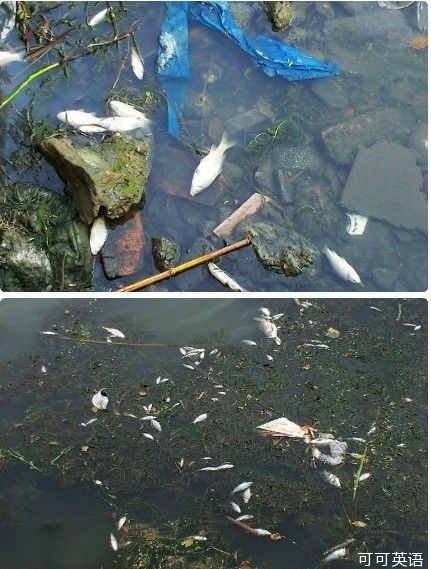2013年4月10日17点30分左右,上海松江区人民政府官方微博发布了泗泾塘、洞泾港部分水域死鱼漂浮初步调查原因。微博中称,“从目前调查的情况看,死鱼的可能原因为信徒集中放生。”
据“松江发布”微博表示,3月30日(农历二月十九)是佛教纪念日,经走访,不少人花几百、几千元买鱼,在泗泾镇周边水域放生。“鱼集中入水后由于气温、水温等因素变化,死亡率极高。”
同时,松江区表示,4月3日至7日,区环保局对泗泾塘、洞泾港等进行了连续、多点水质采样分析,监测结果显示:生物毒性均为安全;挥发性物质未检出;水质常规也未见异常。
记者此前从上海水产品检测中心了解到,送检的鱼由于腐烂程度较高,因此无法做相应的检测。松江区委宣传部一负责人告诉记者,虽然相关送检并没有结果,但不论是从目前走访掌握的信息,还是鱼死亡时间、死亡鱼的种类来看,其他原因均存有疑点,“其他一些地方也有类似集中放生致死的案例,因此我们认为这一可能性比较大”。
记者日前在泗泾塘现场采访时注意到,泗泾塘水域的死鱼已经基本打捞干净,现场也基本闻不到腐烂的死鱼散发的腥臭味。对于水面漂浮的众多死鱼,此前有着包括电击、下药、污染等各种致死原因的猜测。

Dead fish likely released by Buddhists
The 250 kilograms of dead fish taken out of waterways in Songjiang District may have been released by Buddhist followers who freed captive animals to celebrate the birth of Guanyin, the Buddhist Goddess of Mercy, officials said yesterday。
Songjiang District government said residents in Sijing Town reported that many Buddhist followers released fish into the water on March 30, which was the birthday of Guanyin in the Chinese Lunar calendar.
Officials investigated two major wet markets in Sijing and Dongjing, which are close to the waterways。
"Many people paid several hundred to thousands of yuan to buy fish from the markets at the end of March and released them in nearby waterways. Some even paid 10,000 yuan (US$1,612)," an official said。
Officials suspected the fish died because so many were released together into the water。
The floating fish were first discovered on April 1 by residents strolling along the bank of Sijing Pond and Dongjing Harbor. The district water bureau sent teams to retrieve the dead fish on April 3 after more bodies appeared in abundance in the next few days。
More than 250 kilograms had been taken out by Sunday, officials said, when most of the work was complete。
The district Environmental Protection Bureau said water quality in the area is safe。












